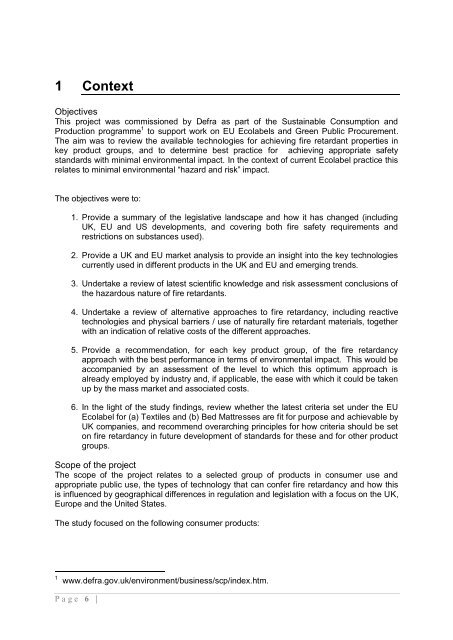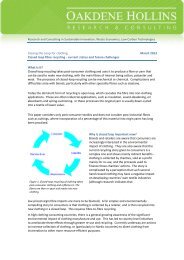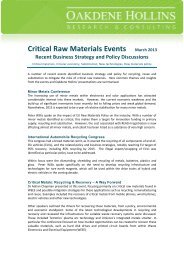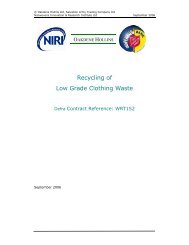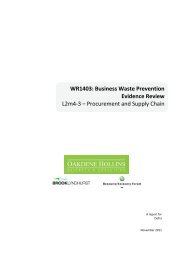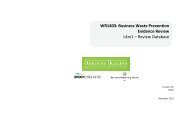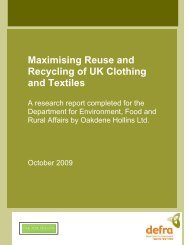Fire Retardant Technologies: safe products with ... - Oakdene Hollins
Fire Retardant Technologies: safe products with ... - Oakdene Hollins
Fire Retardant Technologies: safe products with ... - Oakdene Hollins
- No tags were found...
Create successful ePaper yourself
Turn your PDF publications into a flip-book with our unique Google optimized e-Paper software.
1 ContextObjectivesThis project was commissioned by Defra as part of the Sustainable Consumption andProduction programme 1 to support work on EU Ecolabels and Green Public Procurement.The aim was to review the available technologies for achieving fire retardant properties inkey product groups, and to determine best practice for achieving appropriate <strong>safe</strong>tystandards <strong>with</strong> minimal environmental impact. In the context of current Ecolabel practice thisrelates to minimal environmental “hazard and risk” impact.The objectives were to:1. Provide a summary of the legislative landscape and how it has changed (includingUK, EU and US developments, and covering both fire <strong>safe</strong>ty requirements andrestrictions on substances used).2. Provide a UK and EU market analysis to provide an insight into the key technologiescurrently used in different <strong>products</strong> in the UK and EU and emerging trends.3. Undertake a review of latest scientific knowledge and risk assessment conclusions ofthe hazardous nature of fire retardants.4. Undertake a review of alternative approaches to fire retardancy, including reactivetechnologies and physical barriers / use of naturally fire retardant materials, together<strong>with</strong> an indication of relative costs of the different approaches.5. Provide a recommendation, for each key product group, of the fire retardancyapproach <strong>with</strong> the best performance in terms of environmental impact. This would beaccompanied by an assessment of the level to which this optimum approach isalready employed by industry and, if applicable, the ease <strong>with</strong> which it could be takenup by the mass market and associated costs.6. In the light of the study findings, review whether the latest criteria set under the EUEcolabel for (a) Textiles and (b) Bed Mattresses are fit for purpose and achievable byUK companies, and recommend overarching principles for how criteria should be seton fire retardancy in future development of standards for these and for other productgroups.Scope of the projectThe scope of the project relates to a selected group of <strong>products</strong> in consumer use andappropriate public use, the types of technology that can confer fire retardancy and how thisis influenced by geographical differences in regulation and legislation <strong>with</strong> a focus on the UK,Europe and the United States.The study focused on the following consumer <strong>products</strong>:1 www.defra.gov.uk/environment/business/scp/index.htm.P a g e 6 |


